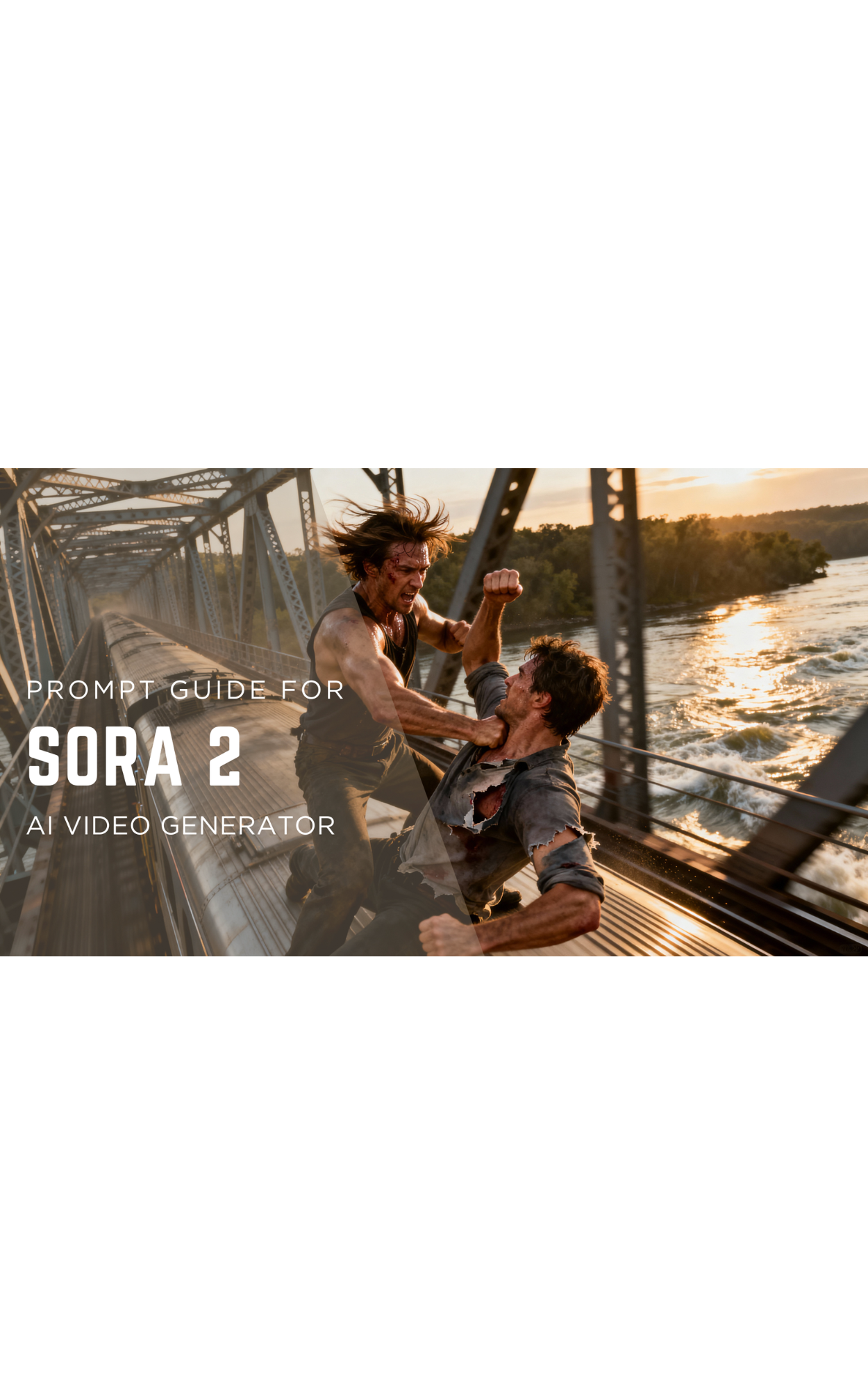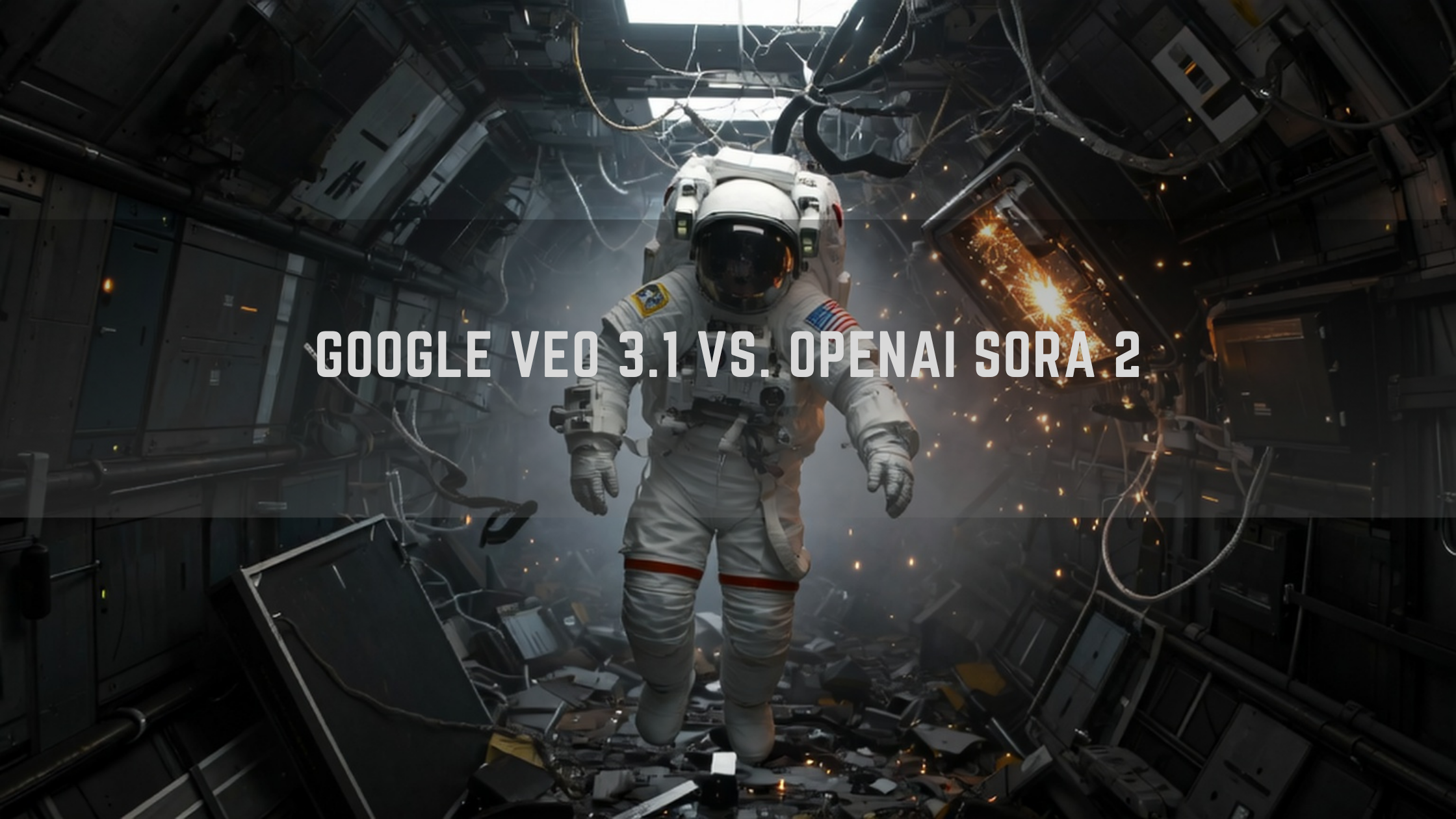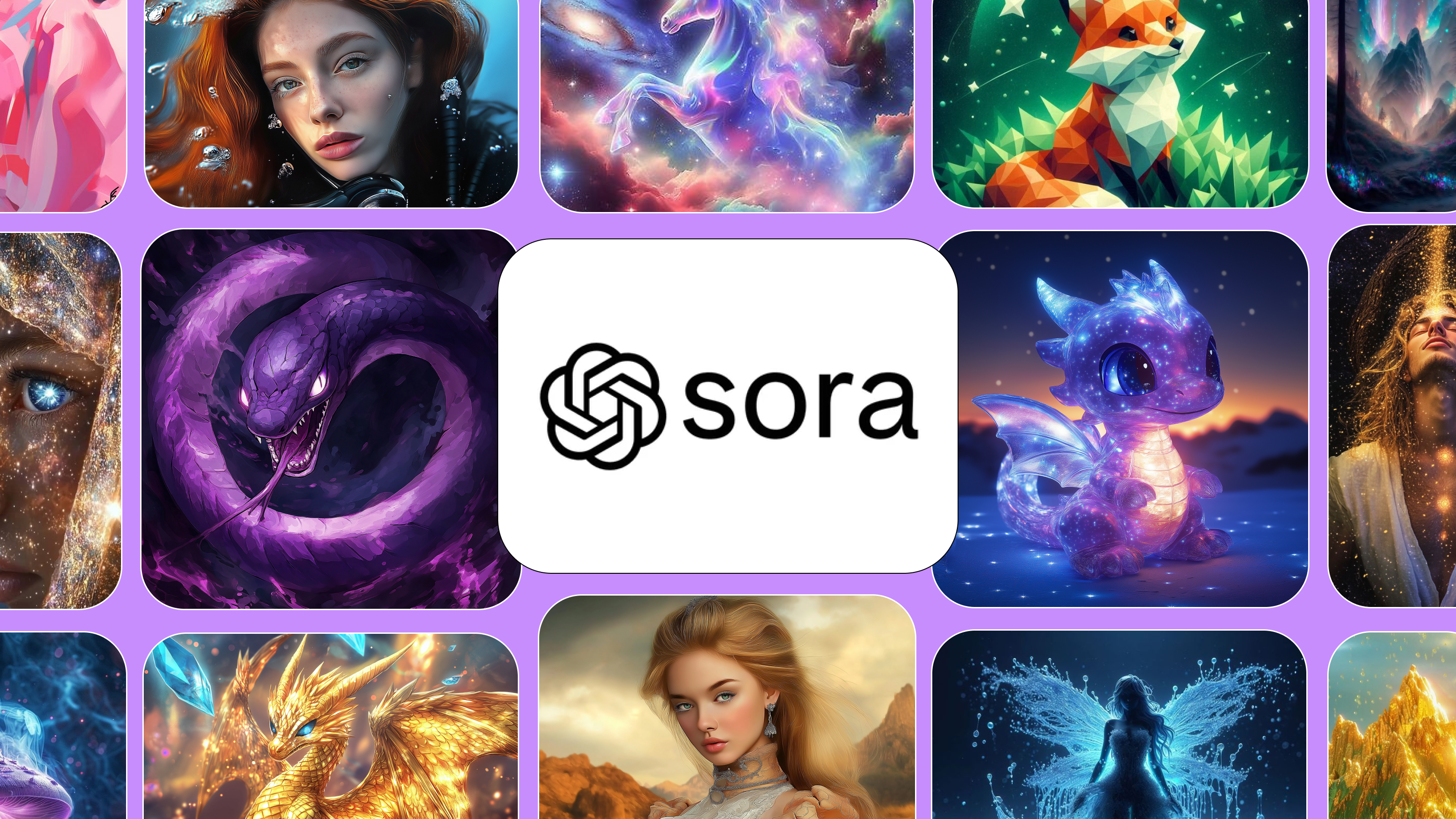

Tooba Siddiqui
Fri Oct 10 2025
8 mins Read
OpenAI Sora 2 is where cinema meets AI advancements, an AI video generator allowing you to play the director, cinematographer, and actor of your videos. With features to control characters, visuals, camera, motion, and atmosphere — Sora 2 brings you your very own filmmaking studio. This AI video generation model isn’t an enhancement to the previous version but a paradigm shift.
Key Improvements in Sora 2 Over Sora 1
Before you start prompting, it is essential to have a complete idea of Sora 2 features. Here’s what makes Sora 2 your go-to filmmaking tool:
- Real-world physics simulation: Yes, a competitor offered this before, but Sora 2 makes it believable. With realistic movements and object interaction, Sora 2 ensures videos are logically and humanly accurate.
- Audio integration: No more muted videos, no more third-party tools for audio incorporation. Sora 2 generates dialogues, soundscapes, sound effects, and background noises to align with your video content and context. It ensures each sound, noise, and dialogue matches the lip movement, mentioned emotion, desired body language and gesture, and the overall atmosphere.
- Multi-shot control and consistency: Change the location, environment lighting, mood, camera angles of your shot and character without worrying about facial shifts, changing appearance, or visual discontinuity.
- Cameo: Become the star of your videos or cast your friends and pets to simulate real-world scenarios. Sora 2 AI video generator will grasp and replicate the facial features, voice, mannerisms, and overall appearance to personalize your content.
Explore Sora 2 features and use cases in detail on ImagineArt blog.
Why Prompting Matters for Sora 2
Every word, sentence, or phrase you type determines the scenes, characters, transitions, atmosphere, and more. This is where you get to play the scriptwriter — write descriptively and test thoroughly. Instead of submitting a lengthy prompt on the first attempt, start with smaller and concise prompts to experiment with the Sora 2 capabilities. Here’s why prompting drastically impacts and dramatically changes your video content:
- Video quality: The clearer the video element description, the better the video results. Keep your prompts well-detailed and descriptive but comprehensive.
- Language ambiguity: Sora 2 relies heavily on the structure of the prompt and uses descriptors in the prompt to create a video. The more precise the language, the fewer the visual artefacts.
- Creative flexibility: The better your prompt, the more creative freedom the AI has to interpret your scene and generate visually compelling shots.
Sora 2 Basic Prompting Structure
Make the most of Sora 2 with this prompting technique, it’s totally worth it.
— TechHalla (@techhalla) October 8, 2025
all the details on how I made this video using timeline prompting on ImagineArt, down below 🧵👇 [pic.twitter.com/GFs4pfdQjI](http://pic.twitter.com/GFs4pfdQjI)
Sora 2 thoroughly understands and contextually interprets the video prompts to generate video results. Here’s how a basic prompt should be structured:
- Scene Context: Mention the elements, aspects, settings, and mood of your atmosphere. This adds a backdrop to your AI video.
Use phrases like “foggy morning,” “neon-lit alley,” “bright day,” “dark skies,” and more.
- Subject & action focus: Type in all the details, including features, height, attire, and more of your main character or characters. Mention the action and movement for a realistic touch.
“…a tall woman in a yellow sundress walking on a pavement on a bright, sunny day.”
- Camera movement & angle: Add the details about camera position and movement to create movie-like scenes.
“…a tall woman in a yellow sundress walking on a pavement on a bright, sunny day. The camera slowly pans to follow her.”
- Mood and lighting: Specify the details about lighting, shadows, and tone to set the right mood for the scene.
“…a tall woman in a yellow sundress walking on a pavement on a bright, sunny day. The camera slowly pans to follow her. The sunlight cast long shadows of trees planted on the pavement.”
Sora 2 Advanced Prompting Structure
Understanding the basic structure can help you experiment with Sora 2 AI video generation capabilities. But, to produce movie-like scenes and videos, you need to know how to leverage each Sora 2 feature for cinematic results:
1. Real-world physics simulation:
This is where you describe the cause and effect of the real physical world for Sora 2. Mention the details of actions, reactions, and motion dynamics for authentic results. Sora 2 doesn’t produce isolated actions but realistic simulations:
- Interactions: The cup slides off the table, its edge grazing the surface before falling to the floor.
- Motion and velocity: The truck barrels down the road, its weight forcing it to drift wide around the bend.
- Physical properties: The paper crumples and tears with realistic folds and jagged edges.
2. Audio integration:
This is where you become the sound designer. Mention the sound cues, add human dialogues in your prompt, include background and environmental sounds, and add pauses, music, and silence to create a well-directed movie.
- Dialogues: Include human dialogues in quotes, “She whispers, ‘I need to leave.’”
- SFX: Add background noise and environmental soundscapes for realism. Use phrases like “pattering of rain,” “gentle cracking of dried leaves,” “loud gunshot,” or “soft whispers of warm breeze.”
- Music tunes: Use musical tunes to set the right mood. Add phrases like “soft guitar,” “energetic tune,” or “Irish bagpipes.”
- Sound cues: These audio elements help ensure auditory realism and immersive experience. Use phrases like “muffled screams,” “gunshot ricochets in the abandoned barn,” and “breathy whispers.”
- Pauses and silence: Cleverly added pauses and silent moments add to suspense. Use phrases like, “An eerie silence, only broken by a single distant scream.”
3. Multi-Shot control:
I wanted to see if Sora 2 could handle those wild anime-style fast cuts, so I tried it in @ImagineArt_X . The timing, the camera motion, it’s fast, chaotic, and honestly, it just works. It legit feels like a scene pulled straight from an anime trailer.
— Dinda Prasetyo (@heydin_ai) October 10, 2025
Music @SunoMusic V5… https://t.co/dAtKNRYKiV [pic.twitter.com/q7cd0yQGpO](http://pic.twitter.com/q7cd0yQGpO)
This is where you get to act as the cinematographer and director of your video. Include narrative details and create multiple generations for a longer video content. To maintain visual and scene continuity in multi-shot generation, add a reference “same scene/character from previous shot” along with similar visual cues.
- Setting and character: "Wide shot of a lone soldier standing on a desolate battlefield at dusk. The sky is overcast, and the distant sound of artillery echoes. His silhouette is outlined by a flickering campfire as he gazes across the horizon."
- Visual continuity: "Same soldier as before, now trudging through the muddy trenches. His helmet is weathered, and his posture is weary. The somber mood continues, with distant explosions reverberating in the background. The camera tracks him from a low angle as he moves forward."
- Advance the story: "The soldier steps into a small, dimly lit bunker and stumbles upon a hidden map spread across a table. His eyes widen with recognition, a close-up showing the shift in his expression. The atmosphere remains tense, with the muted sounds of war in the distance."
4. Cameo:
This is where you get to play the main character in your video. Capture your footage in different setups, light settings, angles, gestures, expressions, and more for accurate replication. Record your voice and speak in a clear tone. Add your cameo into the prompt:
"Insert [Your Name]'s cameo into a high-tech laboratory scene. They’re wearing a sleek lab coat, examining a glowing holographic display, surrounded by futuristic equipment."
Sora 2 Prompt Templates (Tested Examples)
1. Cinematic Short Film
A young astronaut drifts through the wreckage of a damaged spaceship corridor, sparks crackling from exposed panels. The camera rotates gently in zero gravity, capturing the slow, weightless spin. Show the astronaut’s body floating with subtle inertia. Cinematic lighting highlights the debris, with volumetric haze filling the scene and reflecting off metallic surfaces. Astronaut speaks over comms, voice tense and muffled, "Comms down... I am not sure I can make it back." Background sounds include the soft hum of damaged electronics and distant clanks, enhancing the atmosphere.
2. Product Ad
“A close-up of a luxury wristwatch rotating gracefully in warm, golden light, its intricate details shimmering. The background melts into soft bokeh sparkles, creating a dreamy, blurred effect. The watch's movement is captured in slow motion, with realistic physics applied to the rotation, showing the subtle shift of weight and fluid motion. A gentle, ambient hum of soft music plays in the background, enhancing the luxurious feel. The shot is filmed with a macro lens, maintaining a sharp focus on the product while retaining the smooth, refined aesthetic typical of high-end advertisements.”
3. Travel Reel
“A drone shot soars over the iconic rooftops of Santorini at sunset, capturing the soft glow of the sun as it sinks into the Aegean Sea. The camera glides smoothly over the whitewashed buildings and blue domes, with the subtle physics of the drone’s flight creating gentle shifts in perspective. The warm cinematic lighting enhances the scene, bathing everything in golden hues. In the background, the calming sound of waves lapping against the shore blends with the distant calls of seabirds, adding to the serene atmosphere. The shot maintains a consistent, smooth flow, with transitions that keep the viewer immersed in the beauty of the island.”
Common Sora 2 Prompting Mistakes to Avoid
- Overprompting:
Don’t complicate the scene or character descriptions by adding multiple adjectives. This can confuse the model and result in unnecessary visual elements and artefacts. Keep it detailed, but comprehensive and meaningful.
- Character ambiguity:
Mention the character details clearly and specify the main focus and subject of the video content in concise and clear words.
- Stylistic confusion:
Don’t add multiple style preferences in one prompt. Pick one style and stick to it, whether it’s photorealism, abstract, anime, or animated.
- Missing motion dynamics:
Make sure to add details about actions, reactions, movements, and speed in your prompts where needed.
Pricing of Sora 2
On ImagineArt, Sora 2 uses a credit-based system:
- Free Plan: Limited daily video generations, suitable for experimentation.
- Basic Plan: Affordable monthly subscription with more credits and higher resolution output.
- Professional Plan: Includes extensive credits, higher resolutions, priority rendering, and full access to all AI models.
On ImagineArt, Sora 2 consumes 300 credits per 5s-video generation, and Sora 2 Pro consumes 720 credits per 4s-video generation.
Final Thoughts
Now that you know the tricks and techniques to write effective prompts for Sora 2, it’s time to test your creativity. Compose the right instructions, pair them up with your imagination, and turn your idea into cinematic masterpieces. So, let’s make a filmmaker out of you — one prompt at a time!
Looking for more prompt guides? Read Runway Gen-4 Prompt Guide | Runway Act II Prompt Guide | Kling 2.1 Prompt Guide | PixVerse v5 Prompt Guide | ImagineArt 1.0 Prompt Guide | Veo 3.1 Prompt Guide

Tooba Siddiqui
Tooba Siddiqui is a content marketer with a strong focus on AI trends and product innovation. She explores generative AI with a keen eye. At ImagineArt, she develops marketing content that translates cutting-edge innovation into engaging, search-driven narratives for the right audience.



